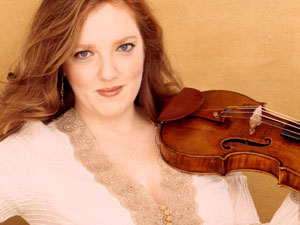|
Symphony
SRS SEASON ENDS WITH RESOUNDING TA-TA-TA-BANG
by Terry McNeill
Sunday, June 1, 2025
Symphony
YOUTHFUL VIRTUOSITY ON DISPLAY AT USO'S MAY CONCERTS
by Peter Lert
Saturday, May 17, 2025
Symphony
MYSTICAL PLANETS AND LIVELY GERSHWIN ORTIZ AT FINAL SRS CONCERT
by Peter Lert
Sunday, May 4, 2025
Symphony
VSO'S CONCERT MUSIC OF TIME, MUSIC OF PLACE
by Peter Lert
Sunday, April 27, 2025
Choral and Vocal
VOCAL ELEGANCE AND FIRE AT THE 222'S RECITAL APRIL 26
by Pamela Hicks Gailey
Saturday, April 26, 2025
CANTIAMO SONOMA SINGS AN INSPIRED GOOD FRIDAY MOZART REQUIEM CONCERT
by Pamela Hicks Gailey
Friday, April 18, 2025
DRAMATIC SHOSTAKOVICH SYMPHONY CLOSES PHILHARMONIC'S 25TH SEASON
by Terry McNeill
Sunday, April 13, 2025
LARGE COLLEGE OF MARIN AUDIENCE GREETS STOPHER ARTISTRY
by Terry McNeill
Saturday, April 5, 2025
Chamber
FRISSON DELIVERS SHIVERS OF DELIGHT
by Abby Wasserman
Sunday, March 30, 2025
OLD AND MOSTLY NEW IN SRS MARCH CONCERT IN WEILL
by Peter Lert
Saturday, March 22, 2025
|
 |
 Violinist Rachel Barton Pine |
EVER WESTWARD ETERNAL RIDER
by Steve Osborn
Sunday, February 21, 2016
Like her violin virtuoso colleagues, Rachel Barton Pine can make herself heard above the din of a full orchestra without noticeable effort; but what made her Feb. 21 performance with the Santa Rosa Symphony memorable was how softly she played. Although she dispatched the forte and fortissimo passages in the Beethoven D Major concerto with élan, her intensity increased markedly the softer she became. The most gripping points in each movement were the trills and other filigrees in the upper registers, which she played on the very edge of audibility to a rapt Weill Hall audience.
Any musician can play loudly, but those who can play quietly without any loss of energy or tempo are rare indeed. By the same token, any competent soloist can play all the notes of the Beethoven concerto, but those who can make sense of them and express their meaning are few. In this department, Pine was somewhat lacking. She hit all the notes, to be sure, but her performance was occasionally choppy and lacked fluidity.
Instead of merging one phrase or musical idea into the next, Ms. Pine often separated them, disrupting the forward motion and draining some of the drama. More often than not, however, the beauty of individual passages shone through. Her cadenza for the first movement was a treat, as was the lovely duet with bassoonist Carla Wilson in the slow movement. Ms. Pine seemed finally to relax in the playful finale, which was marked by a forceful and convincing drive to the conclusion.
The applause was significant, so the violinist obliged with an encore: the Andante from Bach’s second sonata for unaccompanied violin. Here again the pianissimo was bewitching, and it combined with a steady pulse on the lower strings to ravishing effect.
More ravishment appeared in the second half, in the form of Bruckner’s unfinished Symphony No. 9. This colossal work lasts over an hour, and that’s just for the first three movements. Who knows how long it would have been had Bruckner lived to complete the finale?
Ultimately, time is immaterial in Bruckner’s final work. The structure he employs in all three movements resembles nothing so much as a series of ocean waves, beginning in a valley and rising inexorably to a peak before crashing down again. The ascents and descents are most often chromatic, with a lushly romantic aura: chromanticism. Bruckner’s technique may be chromantic, but his content is most often dark and dramatic, even sinister. He incessantly combines and recombines short motifs that lead ever onward. His quest seems to be for some deep, hidden meaning in the world of sound.
Conductor Bruno Ferrandis displayed a firm grasp of Bruckner’s score, carefully guiding his players through the various phrases, crescendos and decrescendos, accelerandos and ritards. He most often conducted with two symmetrical hands, drawing out a foreboding, intense and elemental sound.
The first movement was spine-tingling, resolving in the home key at the very peak of a wave. The intensity only increased in the second, which features a devilish seven-note figure--a triplet and four march steps on a single note--that Gustav Holst later appropriated for the Mars section of “The Planets.” In Holst, the figure conjures up the god of war, but here it seemed a symbol of onrushing fate. Again, Mr. Ferrandis and company played the score to maximum effect, creating a tremendous, fiery sound with sustained energy.
The third movement proved even more gripping. The playing was muscular and assured, and the orchestration was dazzling. The conductor kept all the iterations of the theme intact, leading to a startling dissonant chord that resolves into a serene passage at the end.
The performance was one of the Symphony’s most profound efforts in recent years, rivaling anything they’ve done in that time. An otherwise unremarkable Sunday afternoon turned into a thrilling exploration of uncharted musical territory, filled with both apocalyptic fury and rays of hope.
|
